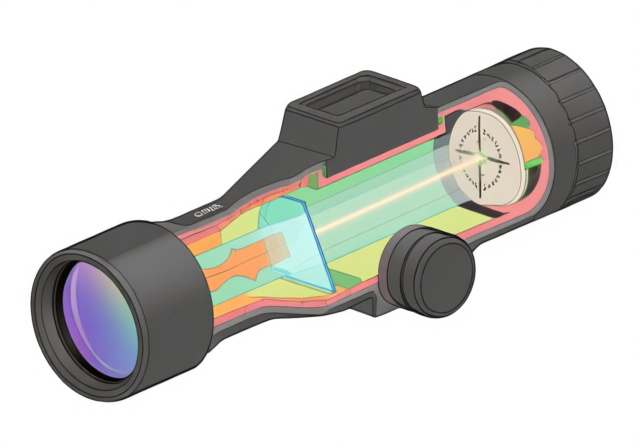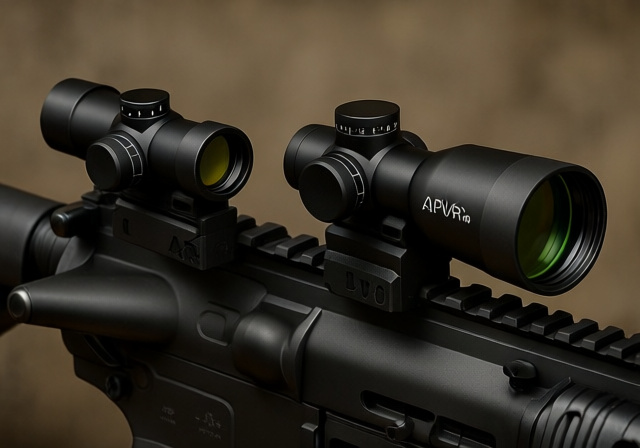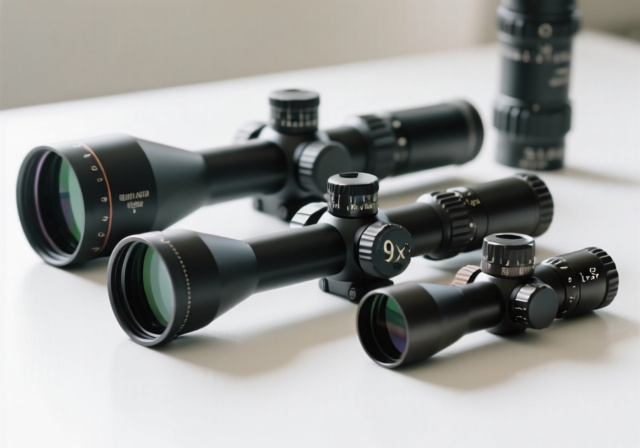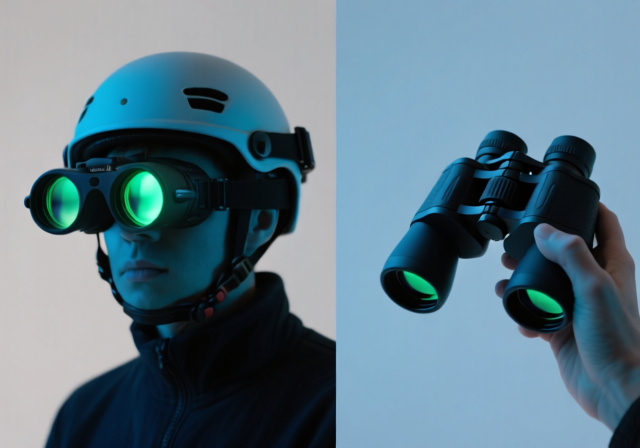

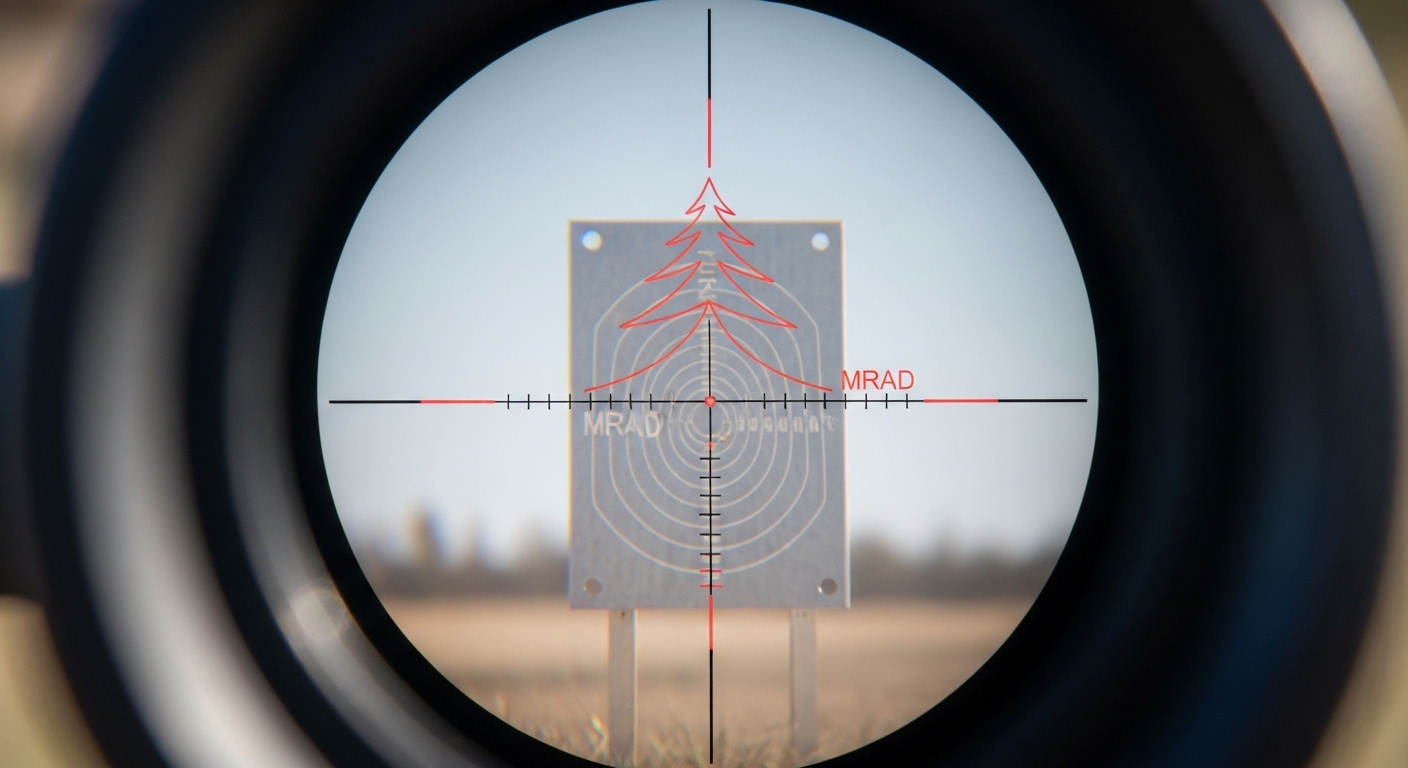

Ever stared through a rifle scope wondering what all those lines, dots, and markings actually mean? You’re not alone. I’ve spent countless hours at the range and in the field helping shooters understand reticle systems. A rifle scope reticle is the key to accurate shooting, yet most hunters and shooters use less than 20% of their reticle’s capabilities.
Rifle scope reticles are the aiming patterns or markings you see when looking through your scope. These precision-engineered patterns have evolved from simple crosshairs to sophisticated ballistic tools that can compensate for bullet drop, estimate range, and adjust for wind drift. The right reticle, combined with proper knowledge, can dramatically improve your shooting accuracy.
Understanding your reticle isn’t just about hitting targets—it’s about ethical hunting, precise shot placement, and maximizing your equipment’s potential. Whether you’re a deer hunter needing quick target acquisition or a long-range shooter demanding precision holdovers, this guide will help you master your reticle system.
We’ll cover everything from basic crosshairs to advanced Christmas tree reticles, explain FFP vs SFP considerations, and provide practical selection guidance based on real-world applications. Let’s unlock the full potential of your scope’s reticle.
A rifle scope reticle is the pattern of lines, dots, or markings etched or placed in the focal plane of an optical sight. These markings serve as your aiming reference point and can range from simple crosshairs to complex ballistic compensating systems. I’ve tested hundreds of scopes, and the reticle design dramatically affects how quickly and accurately you can aim.
Reticles have evolved significantly since their invention in the 17th century. Early scopes used actual spider webs or human hair for crosshairs—hence the term “crosshair.” Today’s modern reticles are typically glass-etched for precision and durability, though some budget scopes still use wire reticles stretched across the optical path.
Reticle: The general term for any aiming pattern in an optical sight, including crosshairs, dots, circles, and graduated markings used for aiming and ballistic calculations.
The primary functions of modern reticles include:
1. Providing a precise aiming point
2. Compensating for bullet drop at various distances
3. Estimating range to target
4. Adjusting for wind drift
5. Offering reference points for moving targets
Reticles can be located in either the first focal plane (FFP) or second focal plane (SFP) of the scope, which affects how they appear at different magnifications. For a deeper understanding of this crucial concept, check out our comprehensive guide on first focal plane vs second focal plane scopes.
Understanding different reticle types is crucial for selecting the right scope. After testing dozens of reticle designs in various shooting scenarios, I’ve found that each type excels in specific applications. Let’s explore the most common reticle types you’ll encounter.
The duplex reticle is the most popular reticle design in the hunting world. Characterized by thick outer posts that taper to thin center crosshairs, this design offers the best of both worlds: quick target acquisition with the thick posts and precise aiming with the fine center. I’ve found that new shooters adapt to duplex reticles faster than any other design.
Best for: General hunting, beginners, all-around use
Pros: Fast target acquisition, simple to use, works in most light conditions
Cons: Limited ballistic compensation features
BDC reticles feature horizontal lines or dots below the center crosshair, each calibrated for specific distances. These markings represent where your bullet will hit at various ranges. Through extensive testing, I’ve found BDC reticles work exceptionally well for hunters who shoot at known distances.
Important: BDC reticles are caliber-specific and work best with the ammunition they’re designed for. Using different loads can significantly affect accuracy.
Best for: Hunters shooting at predictable ranges (100-400 yards)
Pros: No need to dial elevation, quick follow-up shots
Cons: Ammunition-specific, limited to specific ballistic profiles
Mil-dot reticles feature dots spaced at milliradian intervals, allowing for precise range estimation and holdovers. Each dot represents 3.6 inches at 100 yards. After spending years teaching long-range shooting, I’ve found that mastering the mil-dot system provides the most versatile reticle for technical shooting.
Range estimation formula: (Target size in inches × 27.8) ÷ Mil dots = Range in yards
Best for: Long-range shooting, tactical applications, variable distances
Pros: Precise range estimation, versatile, works with any caliber
Cons: Steeper learning curve, requires math skills
Christmas tree reticles feature a grid pattern extending down and out from the center, providing holdover and windage references at multiple distances. Named for their resemblance to a Christmas tree, these reticles offer the most comprehensive ballistic solution. I’ve used these in competitions and found they provide every holdover point you could possibly need.
Best for: Extreme long-range shooting (800+ yards), competitive shooting
Pros: Complete ballistic solution, windage references, multiple aiming points
Cons: Complex, can be overwhelming, requires training
German reticles (types 1, 4, and others) feature thick posts that taper to a fine center, with the bottom post often having additional markings. These European designs excel in low-light conditions due to their heavy posts. After dawn and dusk hunting sessions across North America, I’ve found German reticles superior for visibility in challenging light.
Best for: Low-light hunting, dense woods, quick shots on moving game
Pros: Excellent in low light, fast acquisition, simple
Cons: Limited precision for long range, few ballistic features
Dot reticles feature a central dot surrounded by various reference marks. The dot provides an extremely precise aiming point perfect for small targets. During varmint hunting expeditions, I’ve found dot reticles invaluable for hitting small targets at moderate ranges.
Best for: Varmint hunting, target shooting, precision applications
Pros: Extremely precise, minimal target coverage
Cons: Can be hard to see in low light, limited ballistic data
Circle-X reticles combine a fine crosshair with a circle surrounding the aiming point. The circle helps with quick centering while the crosshair provides precision. This hybrid design works well for both hunting and target shooting.
Best for: Medium-range hunting, target shooting, fast acquisition scenarios
Pros: Quick centering, versatile, good for moving targets
Cons: Circle can obscure small targets, limited precision features
While not a specific pattern, illuminated reticles feature built-in lighting to enhance visibility in low light. Most reticle types can be illuminated. After countless dawn and dusk hunts, I consider illumination essential for serious hunters.
Best for: All low-light applications, tactical use
Pros: Enhanced visibility in low light, versatile with any pattern
Cons: Battery dependency, adds cost, can be too bright
The simplest reticle design, consisting of intersecting horizontal and vertical lines. While basic, a fine crosshair offers maximum precision for target shooting. I’ve seen competitive shooters achieve remarkable accuracy with simple crosshairs when combined with quality optics.
Best for: Target shooting, beginners, short-range applications
Pros: Maximum precision, simple, unobstructed view
Cons: Hard to see in low light, no ballistic features
Similar to duplex but with additional horizontal reference lines, the Multi-X offers more versatility than standard duplex while maintaining simplicity. After guiding new hunters through equipment selection, I often recommend Multi-X as a stepping stone to more complex reticles.
Best for: Hunting at varying ranges, beginners wanting growth potential
Pros: More versatile than duplex, simple to learn
Cons: Not as precise as specialized reticles, limited range estimation
Quick Summary: Choose duplex for simplicity and hunting, BDC for known-distance hunting, mil-dot for versatility, Christmas tree for extreme long range, and illuminated for low light. Match your reticle to your primary shooting application.
Understanding the technical aspects of reticles is crucial for maximizing their effectiveness. Let’s explore the key considerations that affect reticle performance.
The focal plane where your reticle is located dramatically affects how it behaves with magnification changes. This is perhaps the most important technical decision when selecting a scope.
First Focal Plane (FFP): The reticle scales with magnification. At 4x, the reticle appears small; at 16x, it appears larger but covers the same target area. This means your holdovers and measurements remain accurate at any magnification. After years of long-range shooting, I prefer FFP for its consistency and versatility.
Second Focal Plane (SFP): The reticle remains the same size regardless of magnification. Your holdovers are only accurate at one specific magnification (usually the highest). SFP scopes are often simpler to use and can be less expensive. For hunters who mostly shoot at one magnification, SFP works well.
For a comprehensive comparison of these systems, see our detailed article on FFP vs SFP scopes.
Modern reticles are primarily constructed using two methods:
Reticles use different measurement systems for their graduations:
Choose the system you’re most comfortable with—both are effective when properly understood.
Subtension refers to the physical size covered by reticle markings at a given distance. This crucial concept determines how your reticle relates to real-world measurements. For example, a mil-dot reticle has a subtension of 3.6 inches between dots at 100 yards.
Understanding subtension is essential for using your reticle effectively for range estimation and holdovers. Every precision shooter I work with masters this concept early in their training.
Selecting the right reticle can feel overwhelming with so many options available. Based on helping hundreds of shooters make this decision, I’ve developed a systematic approach that simplifies the process.
Your shooting application should drive your reticle selection. Be honest about how you’ll actually use the scope:
Where and when you shoot significantly impacts reticle performance:
Be realistic about your experience and willingness to learn:
Your reticle must work with your entire shooting system:
⚠️ Important: No reticle can compensate for poor shooting fundamentals. Master trigger control, breathing, and position before investing in complex reticle systems.
Different manufacturers offer unique reticle innovations. When comparing major scope brands and their reticle offerings, consider:
Proper maintenance ensures your reticle performs reliably when you need it most. This often-overlooked aspect can extend your scope’s life and maintain accuracy.
Keeping your reticle clean requires careful attention:
Proper storage prevents reticle damage:
Reticle problems can often be resolved without professional help:
Seek professional help when you notice:
For deer hunting, a duplex reticle is ideal for most situations. It offers quick target acquisition in woods and fields, works well in low light conditions, and is simple to use under pressure. For longer-range deer hunting (300+ yards), consider a BDC reticle calibrated for your cartridge.
The most accurate reticle depends on the application. For target shooting, fine crosshairs offer maximum precision. For long-range shooting, mil-dot or Christmas tree reticles provide the most accuracy across varying distances. However, shooter skill and proper zeroing are more important than reticle choice for accuracy.
Illuminated reticles are essential for dawn and dusk hunting, helpful in heavily shaded woods, and valuable in low-light conditions. However, they’re not necessary for bright daylight shooting. If you primarily hunt during midday or shoot at the range, non-illuminated reticles work fine and eliminate battery concerns.
FFP (First Focal Plane) reticles scale with magnification, making holdovers accurate at any power. SFP (Second Focal Plane) reticles stay the same size, with holdovers only accurate at one magnification. FFP is better for varying distances, while SFP is simpler for hunters who shoot at one magnification.
Generally, no. Reticles are permanently installed during manufacturing. Some high-end manufacturers offer reticle replacement services, but it’s often more cost-effective to buy a new scope. Always select your reticle carefully when purchasing a scope.
After testing hundreds of reticles in real-world conditions, I’ve found that the perfect reticle balances complexity with usability. Don’t get caught up in having the most advanced reticle—choose one that matches your actual needs and skill level.
Remember, the best reticle is the one you can use effectively under pressure. Practice with your chosen reticle until its use becomes second nature. Whether you’re a hunter seeking ethical shots or a competitive shooter chasing perfect groups, understanding your reticle is the key to unlocking your rifle’s full potential.
For shooters looking to dive deeper into specific applications, check out our guides on precision long-range shooting and specialized hunting optics. The right reticle, combined with proper training, will transform your shooting experience.


